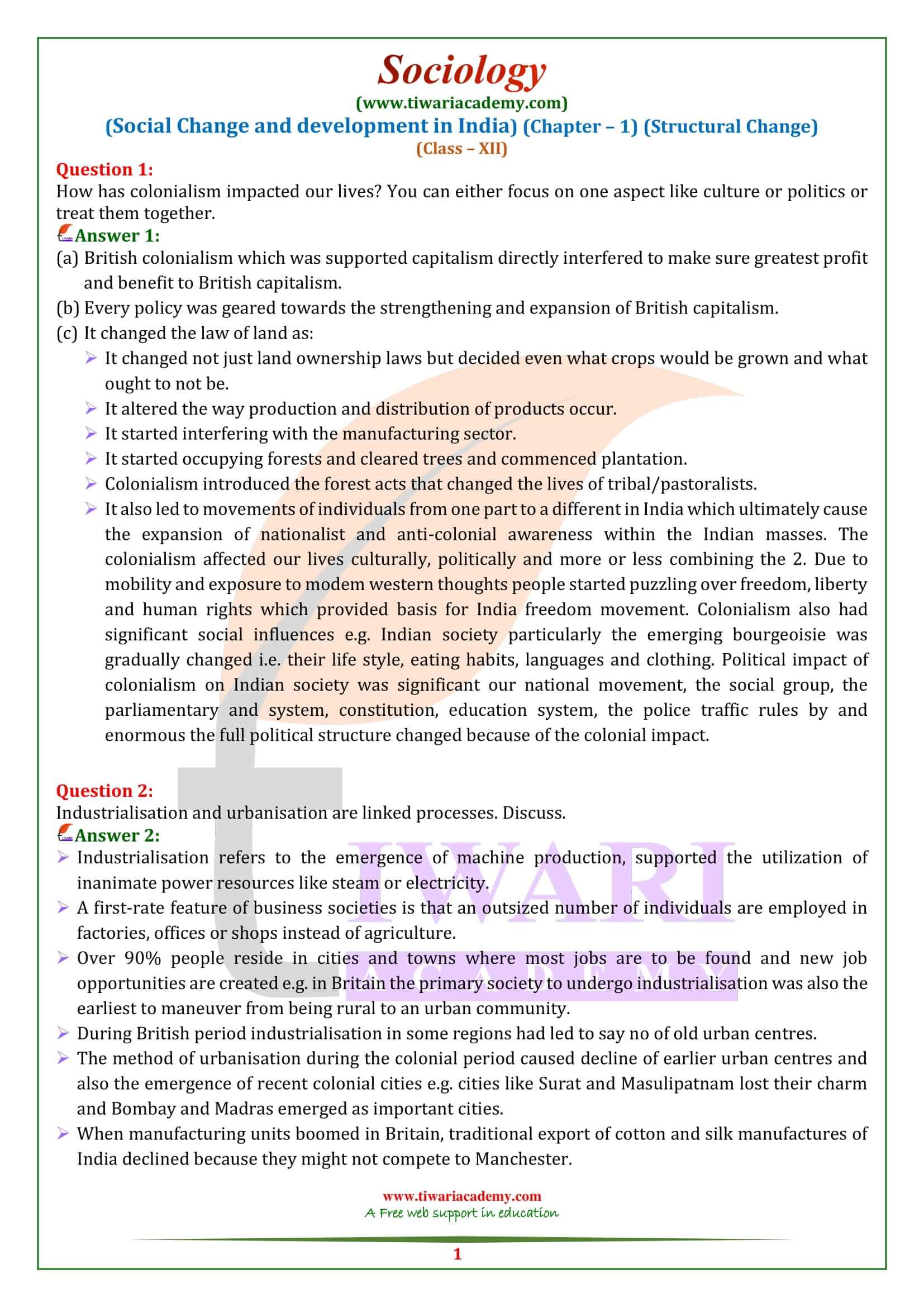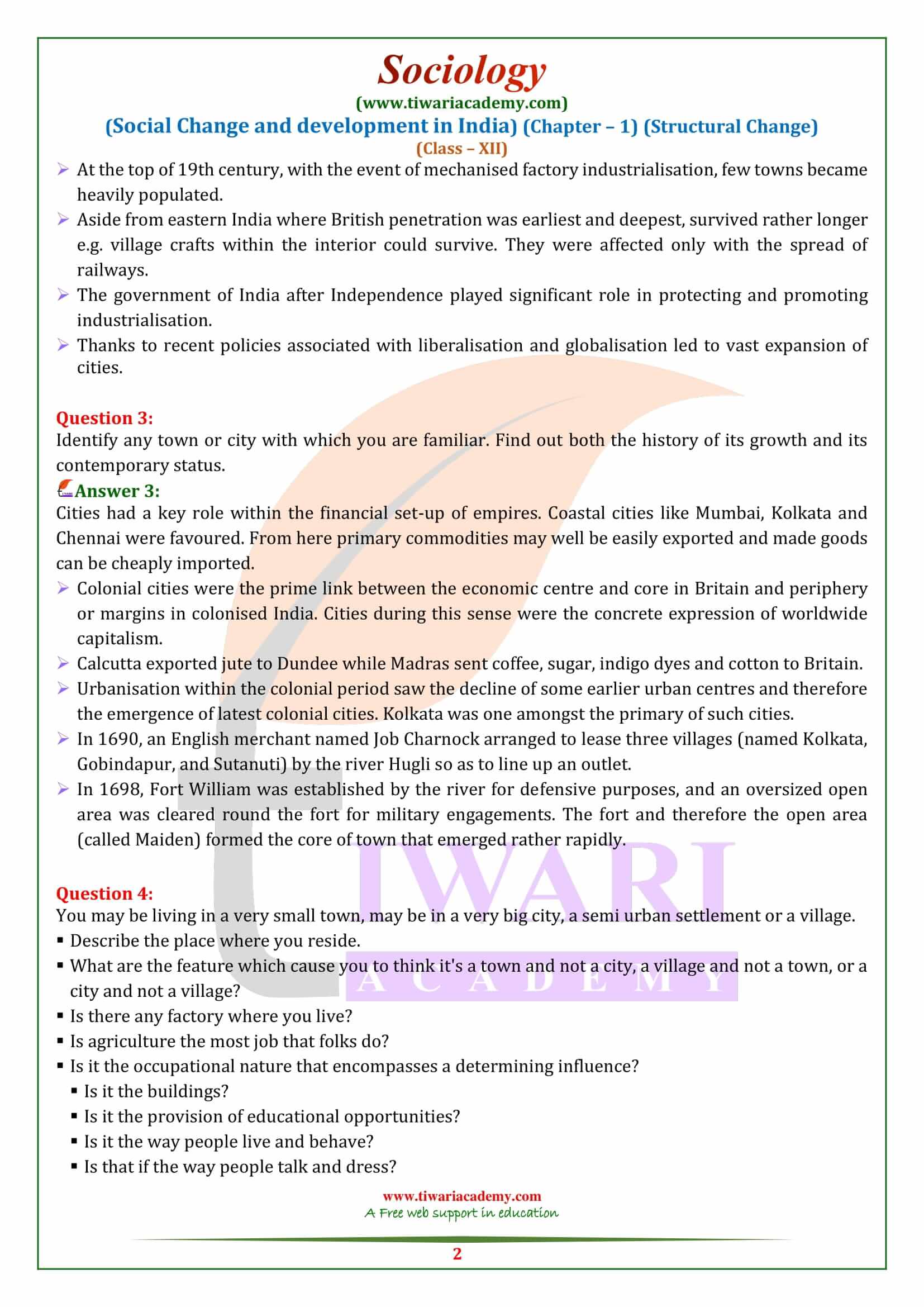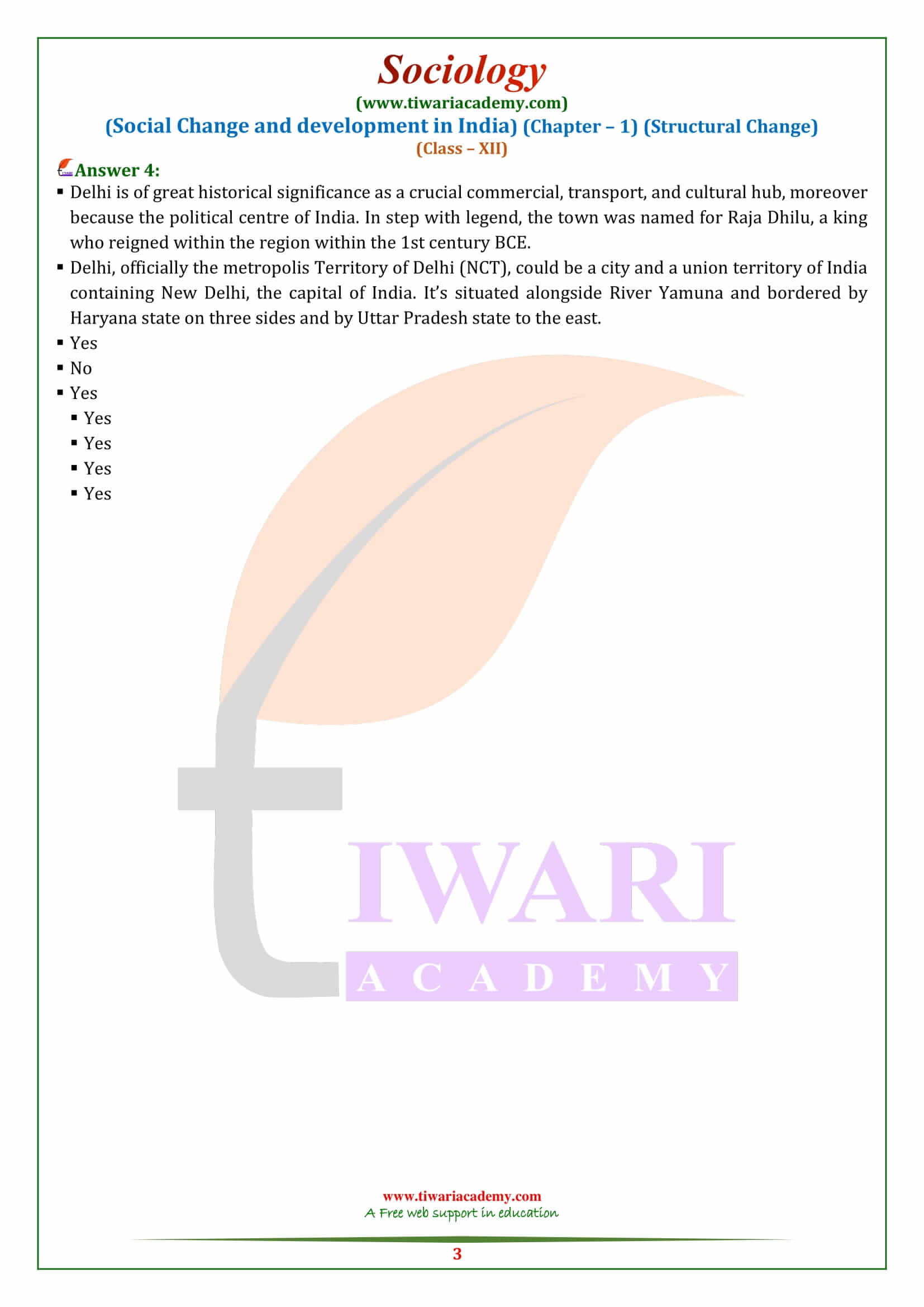NCERT Solutions for Class 12 Sociology Chapter 1 Structural Change in English Medium updated for CBSE and State board students following the session 2024-25. Class 12 Sociology Part 2 Social Change and Development in India chapter 1 MCQ and extra questions with study material for exams are given here free to download.
Class 12 Sociology Chapter 1 Structural Change Question Answers
How has colonialism impacted our lives? You can either focus on one aspect like culture or politics or treat them together.
(a) British colonialism which was supported capitalism directly interfered to make sure greatest profit and benefit to British capitalism.
(b) Every policy was geared towards the strengthening and expansion of British capitalism.
(c) It changed the law of land as:
- It changed not just land ownership laws but decided even what crops would be grown and what ought to not be.
- It altered the way production and distribution of products occur.
- It started interfering with the manufacturing sector.
- It started occupying forests and cleared trees and commenced plantation.
- Colonialism introduced the forest acts that changed the lives of tribal/pastoralists.
It also led to movements of individuals from one part to a different in India which ultimately cause the expansion of nationalist and anti-colonial awareness within the Indian masses. The colonialism affected our lives culturally, politically and more or less combining the 2. Due to mobility and exposure to modem western thoughts people started puzzling over freedom, liberty and human rights which provided basis for India freedom movement.
Colonialism also had significant social influences e.g. Indian society particularly the emerging bourgeoisie was gradually changed i.e. their life style, eating habits, languages and clothing. Political impact of colonialism on Indian society was significant our national movement, the social group, the parliamentary and system, constitution, education system, the police traffic rules by and enormous the full political structure changed because of the colonial impact.
Industrialisation and urbanisation are linked processes. Discuss.
Industrialisation refers to the emergence of machine production, supported the utilization of inanimate power resources like steam or electricity.
A first-rate feature of business societies is that an outsized number of individuals are employed in factories, offices or shops instead of agriculture.
Over 90% people reside in cities and towns where most jobs are to be found and new job opportunities are created e.g. in Britain the primary society to undergo industrialisation was also the earliest to maneuver from being rural to an urban community.
During British period industrialisation in some regions had led to say no of old urban centres.
The method of urbanisation during the colonial period caused decline of earlier urban centres and also the emergence of recent colonial cities e.g. cities like Surat and Masulipatnam lost their charm and Bombay and Madras emerged as important cities.
When manufacturing units boomed in Britain, traditional export of cotton and silk manufactures of India declined because they might not compete to Manchester.
At the top of 19th century, with the event of mechanised factory industrialisation, few towns became heavily populated.
Aside from eastern India where British penetration was earliest and deepest, survived rather longer e.g. village crafts within the interior could survive. They were affected only with the spread of railways.
The government of India after Independence played significant role in protecting and promoting industrialisation.
Thanks to recent policies associated with liberalisation and globalisation led to vast expansion of cities.
Identify any town or city with which you are familiar. Find out both the history of its growth and its contemporary status.
Cities had a key role within the financial set-up of empires. Coastal cities like Mumbai, Kolkata and Chennai were favoured. From here primary commodities may well be easily exported and made goods can be cheaply imported.
Colonial cities were the prime link between the economic centre and core in Britain and periphery or margins in colonised India. Cities during this sense were the concrete expression of worldwide capitalism.
Calcutta exported jute to Dundee while Madras sent coffee, sugar, indigo dyes and cotton to Britain.
Urbanisation within the colonial period saw the decline of some earlier urban centres and therefore the emergence of latest colonial cities. Kolkata was one amongst the primary of such cities.
In 1690, an English merchant named Job Charnock arranged to lease three villages (named Kolkata, Gobindapur, and Sutanuti) by the river Hugli so as to line up an cutlet.
In 1698, Fort William was established by the river for defensive purposes, and an oversized open area was cleared round the fort for military engagements. The fort and therefore the open area (called Maiden) formed the core of town that emerged rather rapidly.
You may be living in a very small town, may be in a very big city, a semi urban settlement or a village. Describe the place where you reside.
Delhi is of great historical significance as a crucial commercial, transport, and cultural hub, moreover because the political centre of India. In step with legend, the town was named for Raja Dhilu, a king who reigned within the region within the 1st century BCE.
Delhi, officially the metropolis Territory of Delhi (NCT), could be a city and a union territory of India containing New Delhi, the capital of India. It’s situated alongside River Yamuna and bordered by Haryana state on three sides and by Uttar Pradesh state to the east.





